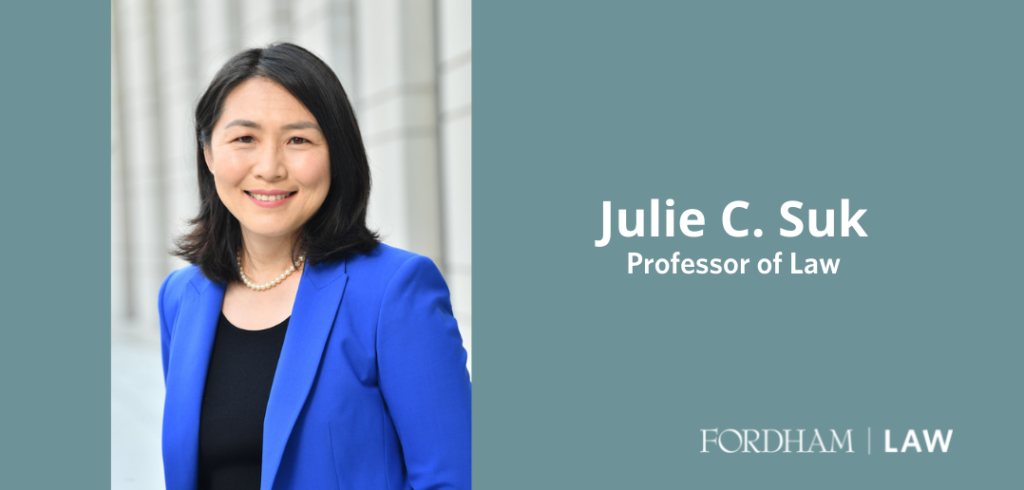Professor Julie Suk was interviewed for the third installment in a series of articles on the Equal Rights Amendment, published in Women’s eNews.
According to Julie Suk, Professor of Law at Fordham University School of Law in New York City, expert on gender equality and constitutions, author of We the Women: The Unstoppable Mothers of the Equal Rights Amendment, and member of the Academic Advisory Council for the ERA Project at Columbia Law School, we need to think of the ERA, “not just as constitutional text, but as the trans-generational movements of women to empower themselves, and to seek recognition of their empowerment.” A movement that begins “even before the Civil War, culminating in the 19th Amendment.”
Similar to the battle for the ERA, which is now on its hundredth year, changing the Constitution to allow women to vote, took a full 70 years. And for the same reasons. “If you don’t have power, it’s hard to get power, when the people who decide who has power don’t include women,” says Professor Suk.
…
According to Suk, “If you think about the fact that 35 states ratified the ERA, between 1972 and 1977, we focus on the fact that that was not enough to send it over the edge in the US. But think about that. 35 out of 50 states, that’s a clear supermajority of the states. And it’s a clear supermajority of the people who live in this country who supported the ERA. So that’s yet another example of how we have structures in the Constitution that prevent the people from democratically deciding our fate.”

